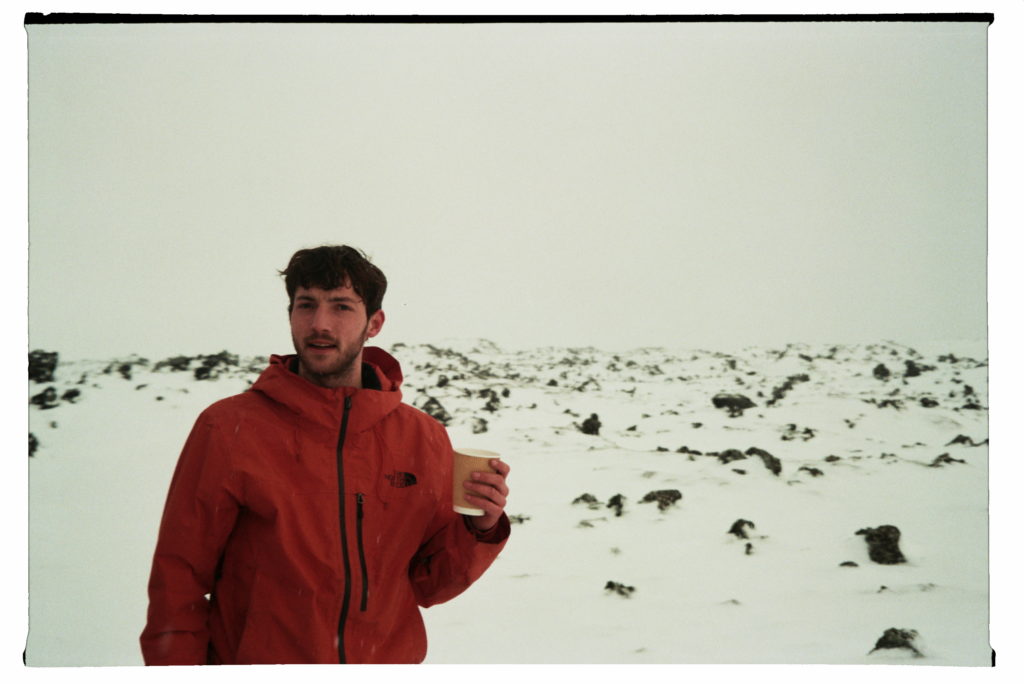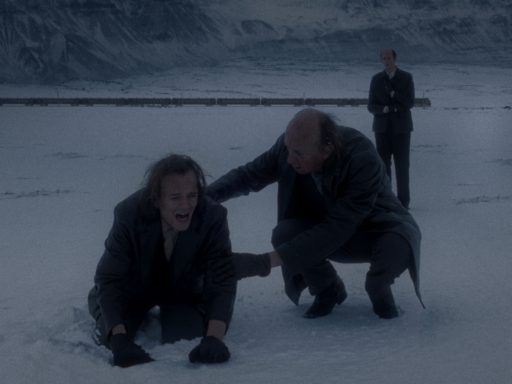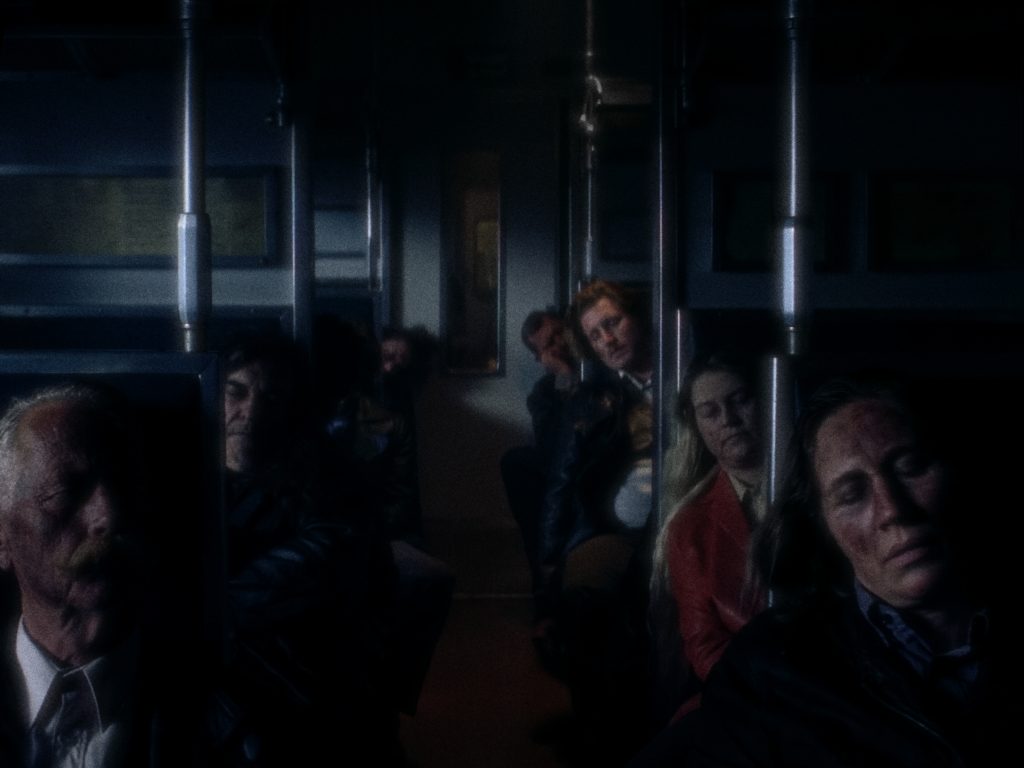Interview with Pol de Plecker: “For me, every single scene, colour and sound has a symbolic meaning”

When we sat down to talk to Belgian helmer Pol de Plecker right after the screening of his eerie short drama Noisetrain in Stadtkino, he was convinced that he was not going to win any award at Vienna Shorts. “The competition is very strong”, he explained, adding that he was nevertheless happy about being a part of it. Little did he know that he was going to be proven wrong, and stand on the stage the next day.
De Plecker is a graduate of the Kask film school in Ghent. He’s been enjoying watching films all his life, which is why he took on film studies seven years ago. Instead of writing classical scripts, he is passionate about creating storyboards, visualising new worlds and setting tone to them. His favourite part of the process is the post-production, working with sound design, colour grading, and making the puzzle pieces fit together and work as a whole. But the writing, especially the dialogue part, he believes, it’s not there yet, and he is trying to conquer the audio-visual and master the film-making first. He is interested in a lot of themes, but is focused on ‘translating’ subjects that are rooted in the moment to set them in specific environments. Consequently, world-building is very important to de Plecker, which is visible in “Noisetrain” since almost everything in it comes from that place. Regarding role build up, he likes to disappear in new worlds and ‘feel’ them first. He is currently working on a new film.
“Noisetrain” is loosely based on Johan Daisme’s novel “De trein der traagheid”. What did you take from it, and what did you leave out?
The thing that at first inspired me the most about the book wasn’t related to the characters, and not even the story itself, but its symbolism. The story is seemingly simple, but there is so much more to it beneath its first layers. You can think about it from different perspectives. I guess that’s what attracted me to the novel, and also made me think more about what I read than in the case of classically built narratives. And again, what I tried to do in the film was: for me every single scene, colour and sound has a symbolic meaning, and I do not expect the viewer to understand all of them, but when all of these little ideas add up it will make the film work on a deeper, maybe unconscious level.
Returning to what you said earlier, one of the most striking things about your film is the sound design which creates a certain eeriness. Knowing that you are behind it, can you explain your connection to music?
At the beginning of the film the lead character is walking on the train platform. In this opening scene I’ve tried to create a very industrial and mechanical sonic world. Later on, when the people hop off the train and start walking through the icy landscape, the sound changes. It is not mechanical anymore, because the natural elements are really heightened, and I needed the contrast between a very structured world in which you have to comply with certain rules, and where you are stuck in expectancies. Once they find themselves in the open, cold space, you can still hear the train, because they are moving parallel to it in a way, but the sound of feet moving in the crunchy snow, the movement of the fabric, the wind and the mysterious howling take over. So, even if the sound of the train is always in the background as they try to catch up with it, nature is more present. Because the film is of course about life and death, and everything in between, I think that the industrial sound is something that defines it. It’s a complex, absurd life we are living, and eventually everyone meets their death.
At the Q&As after the screening at Vienna Shorts, you mentioned that the way you shot “Noisetrain” was somehow convenient in terms of positioning the camera and the extensive use of wide shots. Was the visual result something you decided on alone, or was it the product of the joint ideas coming from you and your cinematographer Wannes Vanspauwen?
Wannes is a very close friend of mine, and actually he is a director as well, which means that he is not solely focusing on photography or being a DoP. We both studied at the same school, and we are the same generation of studies, and we are already working on the next film together. His point of view is in a way also the one of a film director, and since I story-boarded the film it was very clear what I wanted, but still, there is always a difference between drawing a picture and turning it into moving images. But, Wannes is very good with the camera, to be honest – much better than I am.
I drew all the story boards, I made lots of drawings and then we sat down, looked at all of them together and decided from a director’s point of view about what we needed and what had to be altered. In that sense, it was a true collaboration. When it came to shooting the film on the location(s), everything was already defined.
In terms of the setting, shooting in Iceland comes with pricey costs. How did you find your co-producer, and how did you shoot there?
We worked with a young producer, Aldís Dagmar Erlingsdóttir, who was about our age. That was amazing, without her this film would have never happened. We went to Iceland with the Belgian crew, but we had the additional three Icelandic crew members which Aldís had found, which was extremely helpful. It is a very expensive country, but she made it affordable for us. We were fixed with cheap accommodation, food and other important commodities. It is actually a very difficult country to shoot at. The constant change in weather conditions is a challenge, and the locations are hard to reach.

Film still from “Noisetrain” by Pol de Plecker
Do your actors still speak to you?
Yes they do (laughs), but they had a hard time. Their costumes were not as warm as they should have been, but we made sure they had warmth after the takes.
Speaking of actors, they are all from your hometown. Did you know them from before, or did you have a classical casting process?
No, I had no clear idea who was going to play in my movie while I was working on the storyboard. It was at the latest stage that we started casting. I only specifically casted for the lead role, and I was quite happy to have found Oscar van Rompay. It clicked and it was amazing. We only had to figure out some scheduling things. Actually, when I got to him only then I started looking for the other two actors. I wanted to make sure they had some similarities to Oscar, they fitted together.
You have very strong genre elements in your film. Are you generally inspired by genre movies, or was this a coincidence?
I am very interested in genre cinema, but I am not sure if my film can be classified as one of them. To start with the movie that inspired my approach to the sound is David Lynch’s “Eraserhead”, but other than that I am not aware of direct influences concerning “Noisetrain”. If you extend your question to which filmmakers I generally admire, alongside Lynch, those would be my all-time favourite Aki Kaurismäki whose films are so smart and honest, and then of course there is “Gerry” by Gus van Sant (2002) which was a huge inspiration, because he uses so little to say so much. You have only two characters walking through the desert. It’s a lot about nature, about their journey, which also is very symbolic. It is such a great film
How long did it take you to make the film?
I had worked on it for three years, which is a long time especially for a short film. The reason it took that long was that this was the first opportunity I saw to really think about what I wanted to make, and how to make it. Big part of those three years were spent on my contemplation about the shape of things.
Where was the world premiere of “Noisetrain”?
It was back in October at Film Fest Gent, followed by Leuven International Short Film Festival in December where it won the Jury Award, Best Cinematography and Critics Award.
And now you are in the International competition of Vienna Shorts.
I’ve seen amazing films, and I don’t see myself winning something (he will be proved wrong one day later). It is already an honour to be selected in the competition program.
Was there anything that surprised you during the making-of the film?
This was the first time that I worked with a fairly large crew, with lots of professionals. In this job, it is very difficult to trust people because it is your baby and you have lots of ideas about this and that. And all of a sudden, you are surrounded by people who are experienced and know about things much more than you. It’s very logical that collaborations are necessary, but for a newcomer it’s generally difficult to be seen and heard. It turns out that I was very lucky. I had an amazing costume designer Gonne Vanspauwen whom I really trust, but we still had to find a compromise. I knew I wanted to do something with leather, because of the sound it creates. The sound of leather almost speaks instead of actors, the movements create a specific sound that translates the spoken into a different form of acoustic conversation. The costume designer came with some other ideas including other materials and details. She made it so much better and richer than I could have imagined.
Let’s talk a bit about the sound design which is brilliant. Who is behind it?
Actually, I did most of it myself, but I worked with a foley artist (Elias Vervecken) to recreate all the direct sounds in the film, the footsteps, the creaking leather, the crunching snow … During the mixing of the film I worked with sound mixer Raf Enckels. When we started to mix in surround sound it became clear that we needed a much more layered sound design to fill the room. In the end, he helped me a lot with bringing the soundtrack to life.

















